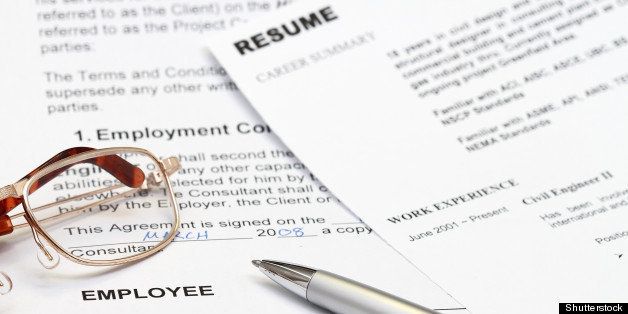
Looking to launch a second career? Follow these tips to revitalize your résumé
Every year, millions of Americans over age 55 happily choose to retire. But whether it's due to a lack of savings or a desire to stay active, many others remain in the workforce, and their numbers are growing: In 2012, 40.6 percent of people age 55 and older considered themselves to be in the labor force, according to data from the Bureau of Labor Statistics.
With more and more older workers looking to stay in or re-enter the workforce with a second career, it is important to make sure your résumé highlights all the experience and passion you have to offer. With that in mind, here are some tips to make sure your résumé is up to current standards:
1. Emphasize your relevant job skills. "If you're moving into a new sector, I would say it's really important to highlight transferable skills," says Marci Alboher, author of "The Encore Career Handbook: How to Make a Living and a Difference in the Second Half of Life." Although seasoned workers may have years of experience in one field, it is important to play up your ability to seamlessly make the leap into another, and emphasize any new training or experience. "If you've done any retraining or recent education, put that prominently, and really highlight it because it shows you're refreshing your skills ... A shiny new credential is the great equalizer if you feel like in other ways you may be disadvantaged by your age," Alboher says.
Don't be afraid to draw from experiences that may come from volunteering or serving outside the workplace. "If the most relevant experience or the most recent experience you've had for the work you want to do is in a volunteer or pro bono capacity, just write that. Write that up as you would write any other work experience," Alboher says. "Describe your contributions and responsibilities in a way that really exemplifies why that work makes you more marketable for doing that same kind of activity in a paid context."
2. Dance around dates. Many older workers clutter their résumés with decades of prior experience. Instead of relying on your early work history, stress your most recent and relevant professional experience, says Kathy Keshemberg, a nationally certified résumé writer. "You really don't want to list jobs that are back in the 1980s or 1990s so much," Keshemberg says.
Instead, list relevant work experience from the past decade. If you need to list anything further back – say, from 15 or 20 years ago – try including a "previous work experience" section that lists the company and job title without dates, Keshemberg suggests.
Or kick off your résumé with a brief narrative or summary of your qualifications. "[Employers] often don't really care what you did 25 or 30 years ago. But if that happens to be the most relevant work that you do, your challenge is to find a way to feature that prominently, and I always recommend doing that up in the top in a summary," Alboher says. "It's a way to encapsulate a long period of experience and really highlight the relevant pieces of it ... even though it was quite a long time ago."
3. Ditch outdated phrases. Thoughtfully prepare and age-proof the job descriptions on your résumé. "Be very careful about checking your choice of words and the language that you're using," says Nancy Collamer, author of "Second Act Careers: 50+ Ways to Profit from Your Passions During Semi-Retirement." "As an example of this, I started my career way back when in HR. And at the time, I was director of personnel. And if I put that on a résumé now, it would completely date me … People talk in terms of 'talent acquisition.' Pay attention to your word usage."
Tailor your language by looking at the company's job posting or list of qualifications. "Figure out what that company is looking for, and then use phrases and terminology in their ad to describe what you've done," Keshemberg says. Streamline your language, replacing clunky phrases like "duties included" or "responsible for" with active verbs that showcase your abilities, and nix the tried-and-true objective statement, Keshemberg says. "We don't include an objective statement because that's kind of focused on what you want versus what you have to offer," Keshemberg explains. "Instead, we use a summary of qualifications or a profile to open the résumé and really highlight the value proposition of the person – what it is that they have that really would be valuable to the next employer."
[Read: 8 Ways to Boost Your Income Now.]
4. Reformat. "The most important thing to keep in mind is that your résumé just needs to look like a résumé from 2013," Alboher says. Even your font choices could inadvertently reveal your age. "Times New Roman is certainly OK, and it's acceptable standard font on résumés, but you could go with something that's a little bit more modern, too," Collamer says.
Stick to the traditional education and experience format, but make sure your résumé can lead potential employers to your online presence, Collamer says. Include links to your LinkedIn profile, and indicate whether you're active on social media, such as Google Plus or Twitter. "If that's part of your profile, that's a good thing to put on your résumé, especially if you're worried about ageism issues," Alboher says. "You should be investing in your LinkedIn profile as much as or more than you are investing in an old-style résumé ... Make sure that it shows you're fluent with the way people are finding work today."
